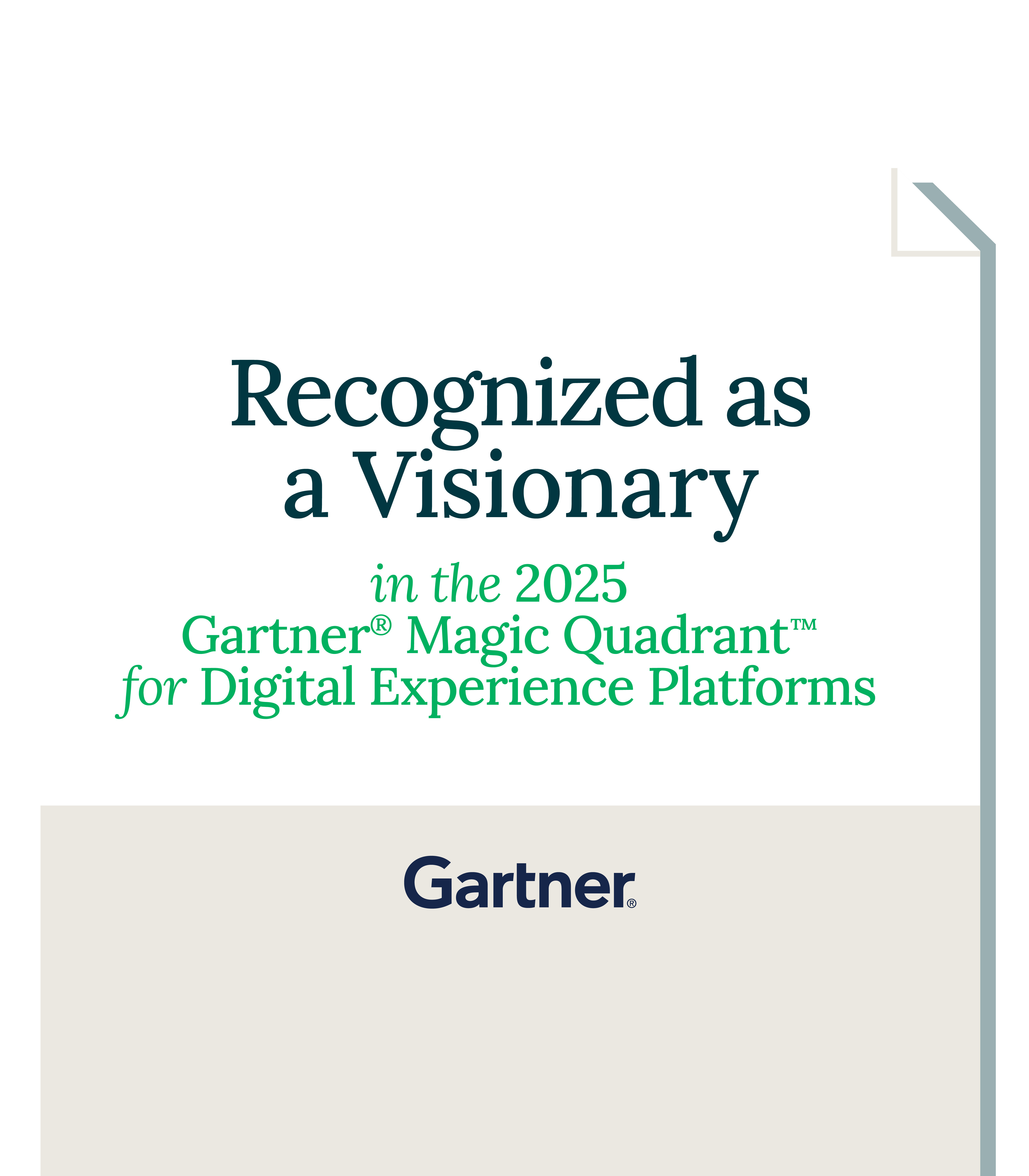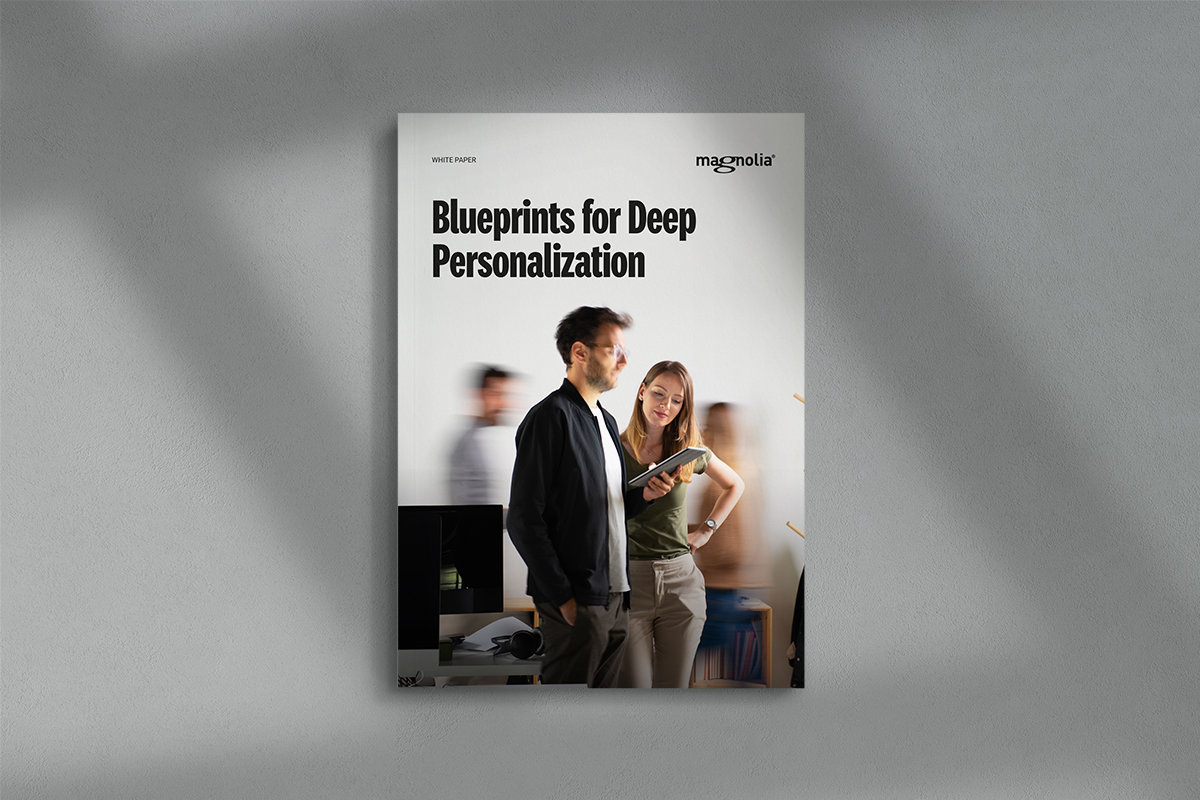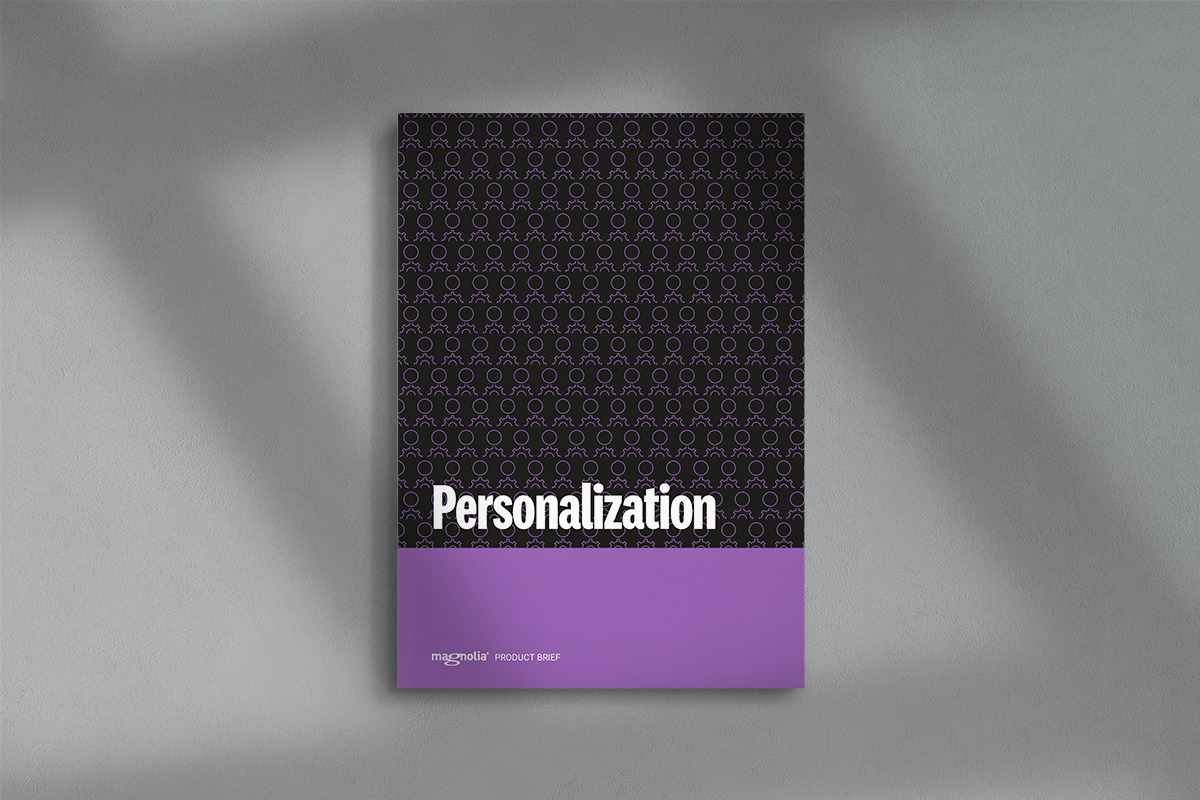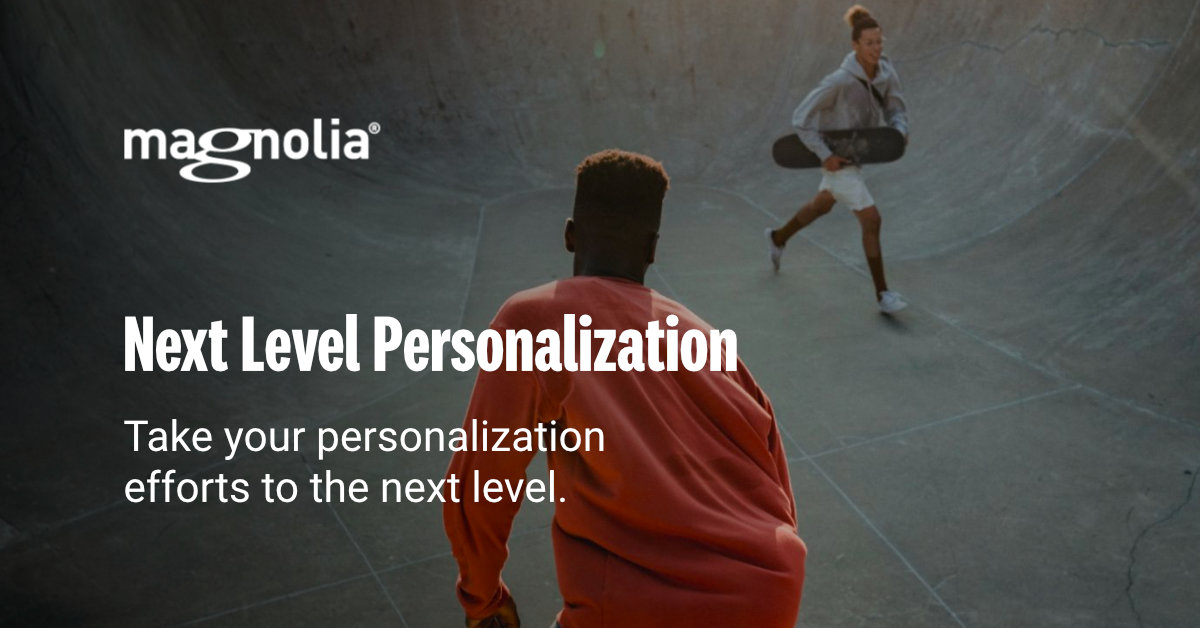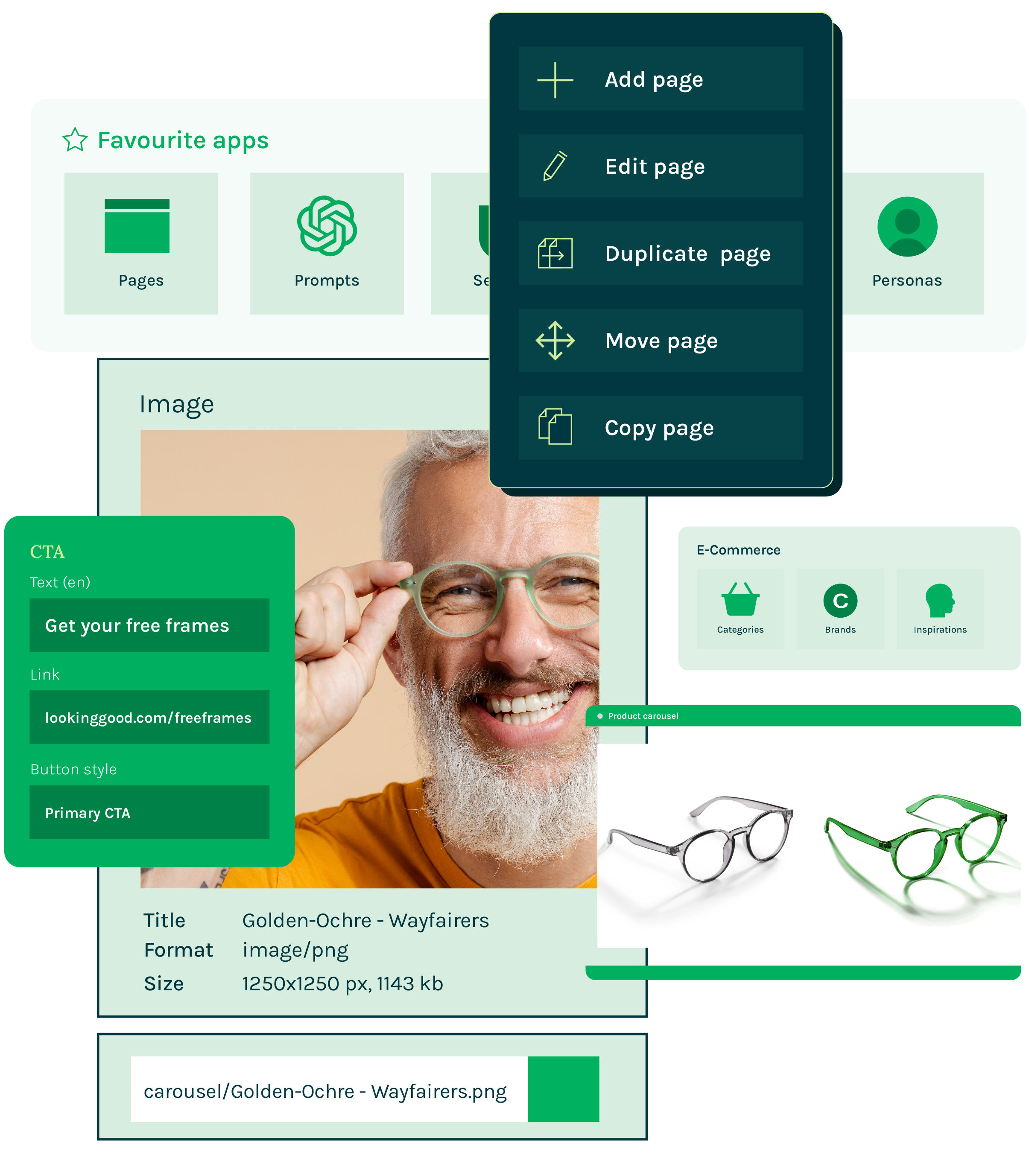What Magnolia personalization can do for you
Create relevant experiences
Personalize experiences for visitor segments based on who they are, how they behave, and what’s happening in the world. Magnolia unifies and leverages your data to tailor your website and other digital channels to your customers, improving their experience, and increasing conversion and engagement.
Personalize any channel at scale
Magnolia enables omnichannel personalization and optimization without compromising performance. Deliver personalized experiences from Magnolia or consume personalized content via our APIs enabling headless personalization in any front end.
Personalize, analyze, and optimize
Magnolia offers personalization and A/B/n testing out of the box and makes the integration of third-party data simple. Bring together content, analytics, and customer data on a single screen and create personalized and optimized experiences your customers love.












Personalize any frontend
Headless architectures are getting more popular due to their flexibility, but do headless and personalization go together?
They do with Magnolia! You can build custom front ends and easily consume personalized content via our delivery API.
This is how it works: Marketers and content authors create personalized variants of a component based on specific audience traits using Magnolia's visual editor. Developers query the content by specifying these traits in their API request. They then receive clean, personalized content, making headless personalization a breeze.

Optimization Integrations
All-in-one SEO, accessibility and content quality tools inside Magnolia - in one seamless workflow.
Expand your martech stack
Segments
Define audience segments based on specific audience traits and create personalized experiences for each group, increasing relevance and engagement.
A/B/n Testing
Create multiple page variants and test which one is preferred by each audience, optimizing the performance of your content and converting more visitors into customers.
Marketing Tags
Insert snippets on your pages to collect web analytics, tracking performance for better insights and attribution; or integrate 3rd-party content from social media or ad networks.
Unified Customer Data
Integrate your marketing automation, CRM, or CDP to track user behavior and to capture customer data in one place, creating a 360-degree view of your customers.
Analytics & Insights
Bring your external analytics dashboards straight into Magnolia's authoring interface and display analytics data in the context of content, helping you improve experiences.
Search Engine Optimization
Check and audit content as you work through on-page diagnostics and recommendations, optimizing your content's impact on SEO.
Our customer stories
Check out our case studies to learn from our customers how they use Magnolia’s content platform to improve their customer journey and increase revenue.
FAQs
What is headless personalization?
Headless personalization is content personalization delivered through a headless content management system (CMS). With headless CMS architecture, content management and delivery are decoupled so that content can be managed and created without the constraints of the presentation layer. Headless personalization allows for more flexibility in the content delivery process and enables personalized content delivery to multiple channels and devices.
Are Magnolia's personalization capabilities headless-ready?
Yes, Magnolia's personalization capabilities are headless-ready. Magnolia provides a headless content delivery API that allows organizations to deliver personalized content and experiences to any channel or touchpoint, including websites, mobile apps, and IoT devices. Magnolia's headless capabilities enable organizations to decouple the content management and delivery layers, providing greater flexibility and scalability.
What is personalization in CMS?
Personalization in CMS (Content Management System) refers to the ability to customize content and experiences for individual users based on their behavior, preferences, and other data. Personalization refers to creating variants of content for different audiences, defining which audience segment should receive which variant, and also testing the variants (e.g., through A/B testing).
What are the different types of personalization?
Depending on the type of data used for personalization, there is implicit (i.e. data is captured by tracking the user’s behavior) and respectively explicit (i.e. data is provided by the user) personalization.
What is a popular method for personalization?
One popular method for personalization is rule-based personalization, which involves setting a set of rules or criteria for personalizing content based on user behavior or qualities. A good example is an ecommerce site that might use a rule-based system to suggest products based on a user's location, browsing habits, or past purchases.
What are the different types of personalized marketing?
There are several types of personalized marketing, including:
- Behavioral personalization involving data about a user's behavior, such as their browsing history and purchase history, to personalize marketing messages and recommendations.
- Demographic personalization based on data about a user's demographic profile, such as age, gender, and income, to tailor marketing messages and offers to their specific needs and preferences.
- Contextual personalization including data about a user's current context, such as their location, time of day, and device, to deliver relevant and timely marketing messages and offers.
- Collaborative personalization is created when users are asked to provide feedback and preferences to help personalize their experience.
What are the 4 R's of personalization?
- Recognize: The first step in personalization is to identify the user. This entails gathering and studying user data, including browsing habits, past purchases, and demographic data.
- Remember: As part of personalization, brands must also remember how users have interacted with them. In order to do this, information regarding a user's previous actions and preferences—such as product choices, past purchases, and search queries—must be stored and analyzed.
- Recommend: Another aspect of personalization is making pertinent suggestions for goods, services, or content based on user behavior and preferences. This entails utilizing data and analytics to provide recommendations for goods or information that the user is probably interested in.
- Relevance: Lastly, personalization should concentrate on providing the user with relevant experiences and messages. This entails distributing content, messaging, and offers through the appropriate channels at the appropriate times, all while being tailored to the user's needs and preferences.
What is Personalization vs Codification?
Personalization and codification are closely related terms. This is because personalization involves creating custom experiences for different users.
Personalization involves tailoring content and experiences to individual users based on their behavior, preferences, and other data points. Personalization aims to create a customized experience that feels unique and relevant to each user.
Codification involves creating standardized content and experiences that can be applied to a wide range of users. Codification aims to create a consistent and predictable experience that can be easily replicated across different touchpoints and channels.
What are the steps of web personalization?
The steps of web personalization typically involve:
- Data gathering: Personalization begins with gathering data about the user, including information about their browsing habits, search terms, and demographics.
- User segmentation: After data has been gathered, users can be divided into several groups based on traits or behaviors that they have in common. This makes personalization attempts more focused and pertinent.
- Content creation: Personalization also requires creating content that can be tailored to each user segment. This can involve creating different versions of a webpage, email, or other content asset that are customized for each segment.
- Personalization rules: Personalization rules specify how each user category should receive content. These guidelines may be determined by a number of variables, including user behavior, location, or device.
- Testing and optimization: Personalization efforts should be tested and optimized over time to ensure they effectively drive user engagement and achieve business objectives. This can involve A/B testing, multivariate testing, or other optimization techniques.
- Continuous improvement: Finally, web personalization is an ongoing process that requires continuous improvement and iteration. This involves analyzing data, monitoring user behavior, and adjusting personalization efforts as needed to ensure that they remain effective and relevant.




